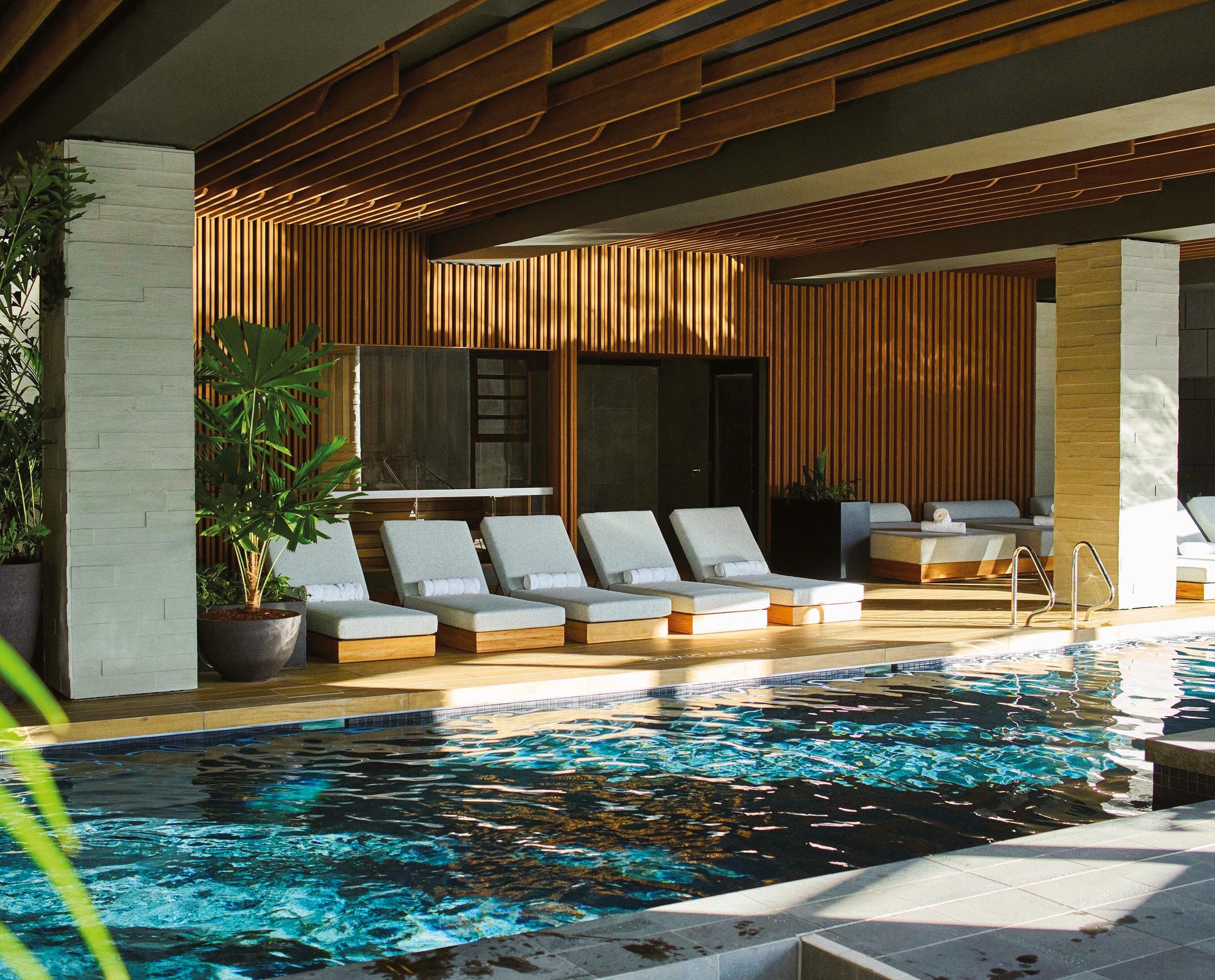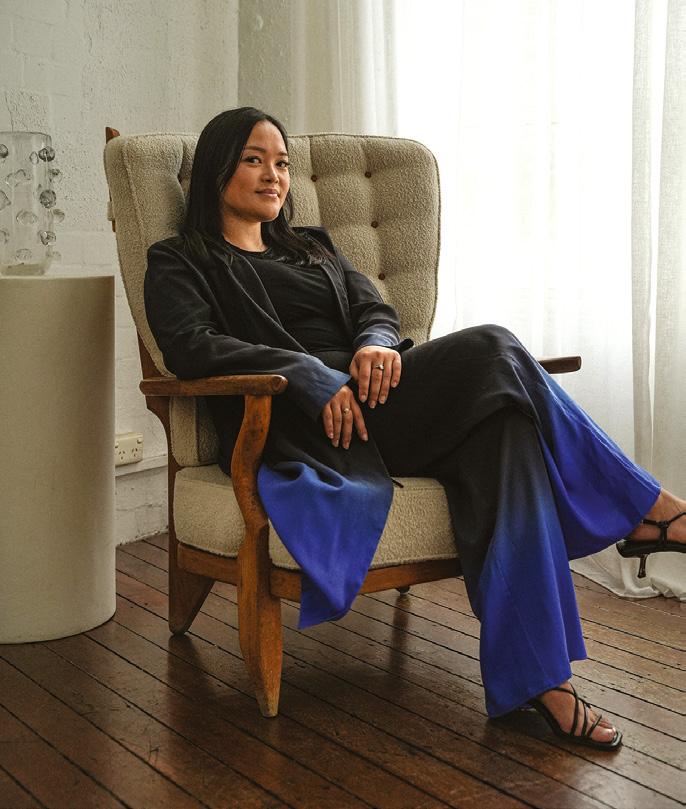
4 minute read
HM Q&A: STYLE MEETS SUSTAINABILITY
Style meets sustainability
1 HOTEL MELBOURNE IS RECOGNISED FOR ITS SUSTAINABLE DESIGN ETHOS, FEATURING MORE THAN 7000 PLANTS, 4500SQM OF RECLAIMED TIMBER AND 2000 ORIGINAL ELEMENTS. FORMER STARWOOD HOTELS VICE PRESIDENT OF DESIGN REBECCA KING SPOKE TO RUTH HOGAN ABOUT THE DESIGN DECISIONS AT THIS “NATURE-INSPIRED” PROPERTY.
Can you tell us about the extensive work involved in reclaiming existing timbers and materials throughout this design?
Reclaiming existing timbers from the building site was both a deliberate design choice made as a celebration of location, and a play towards sustainable practice. Some of the reclaimed timber was sourced from Melbourne’s metro tunnel excavation to decommissioned railway bridge, and you’ll see this used on the monumental staircase and the headboards in all the guest rooms.

But most notably, we were able to salvage some of the timber from the old subaquatic wharf on which the hotel was built which you’ll now see repurposed in the entry way of all 277 rooms – each piece is unique and intricately marked by the burrows of tiny marine worms.
Tell us about the biophilic element of this design and the work involved in maintaining these elements.
The design takes strong cues from nature as a reflection of 1 Hotel’s ‘commitment to sustainability and reverence for the land’. There’s a lot of raw material usage, with examples include hand-hewn timbers, tumbled stone, and supple aniline leathers require little maintenance and gather more character over time. Again, deliberately chosen to continue adding colour to the hotel’s story as time goes on. There’s also a heap of live flora incorporated throughout the design too, which really helps to bring the outside in.
How have local history and culture been infused into the design?
The site’s rich maritime history was a constant source of inspiration, amounting in a design that is entirely unique and individual to Melbourne. The site’s nautical heritage has been integrated into the design to establish a deep sense of place, seen in detail from the blackened steel frames that echo the original goods shed, to split faced granite accents, to rope details on bespoke chairs in the public area.

How have public spaces been designed for work, relaxation and socialisation?
Nothing was designed by accident – the intent was to build a layered, tactile environment that felt lived-in, personal, and inherently human. My favourite example of this is in the lobby bar – the space is multi-purpose and flows effortlessly, inviting guests to use and exist in the space in their own way. Open sight lines link each ground floor zone, so as you move through the space, you feel the energy of those around you.

How are sustainable design decisions impacting the bottom line?
I know the eco-conscious narratives often get the spotlight, but the bottom line is that hotels are inherently unsustainable so our approach to the design was about hotels better. Utilising local materials played a big role in this, and throughout the entire design process, we found ourselves questioning what can we upcycle and what can we source locally from furnishings to finishings and found objects.

The Crane Bar (main lobby bar) is a great example of this. Every single piece of furniture in that space was custom made, designed specifically for the hotel. From what I understand that level of customisation is quite rare in Australian hospitality. The use of local Australian Blackbutt timber is another great example, and a first for the 1 Hotel brand. Filtered water stations in every room not only cut down the need for single-use plastics at the hotel, which is another one that feels unexpected.
What feeling do you hope guests will walk away with based on their experience of the hotel design?
Every design choice was made with the intent to make the hotel feel like a home away from home for guests – a place to inhale, take a deep breath and unwind from the chaos of the everyday.



